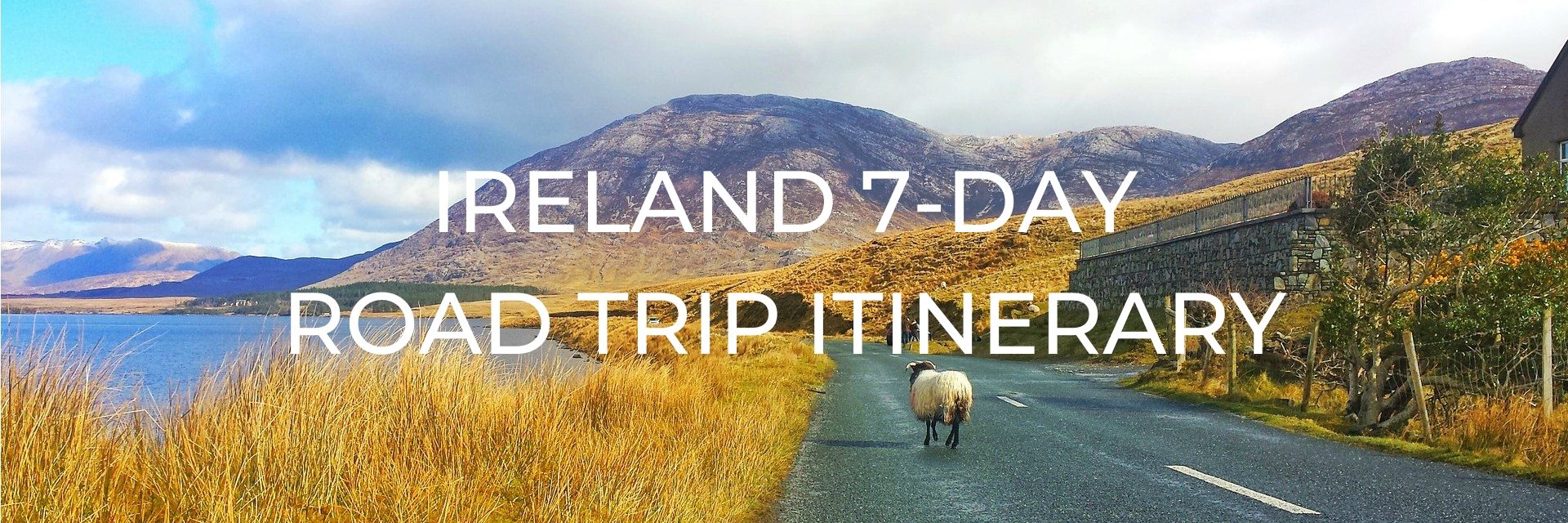
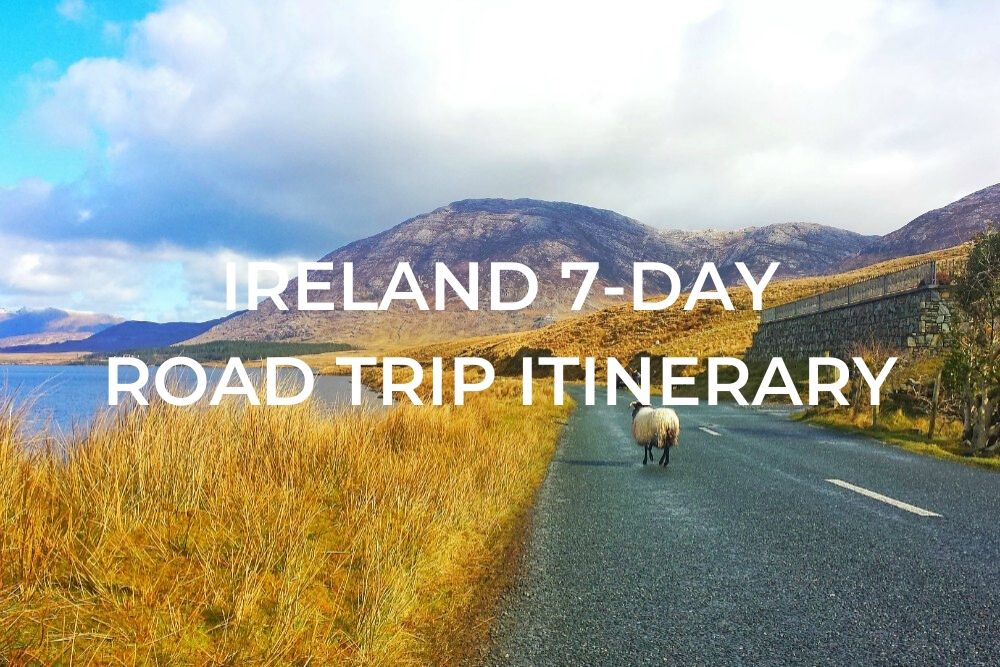
Ireland is an addictive place to explore with its plunging cliffs, towering mountains, ancient castles, charming pubs, and the friendliest people. There is so much to see and do…but where do you start? Even with the best of intentions, you’ll never see all of Ireland on a short visit but with some planning, it is possible to cover quite a lot of ground on a seven-day road trip and feel quite at home.
This suggested (and tested!) itinerary will help you get the most of this wonderful little country. We spent most of our time in the southern/central region where it was easy to get around and the major sites are relatively close together and can be linked together with great scenic drives. Our intention is still to return to see the rest of Ireland, and also Northern Ireland, but for this trip, we stayed south/central and felt it provided a great taste of the country and its varied sites and attractions.
Want to save this for later? Click the Pinterest button on the left for a pinnable image!
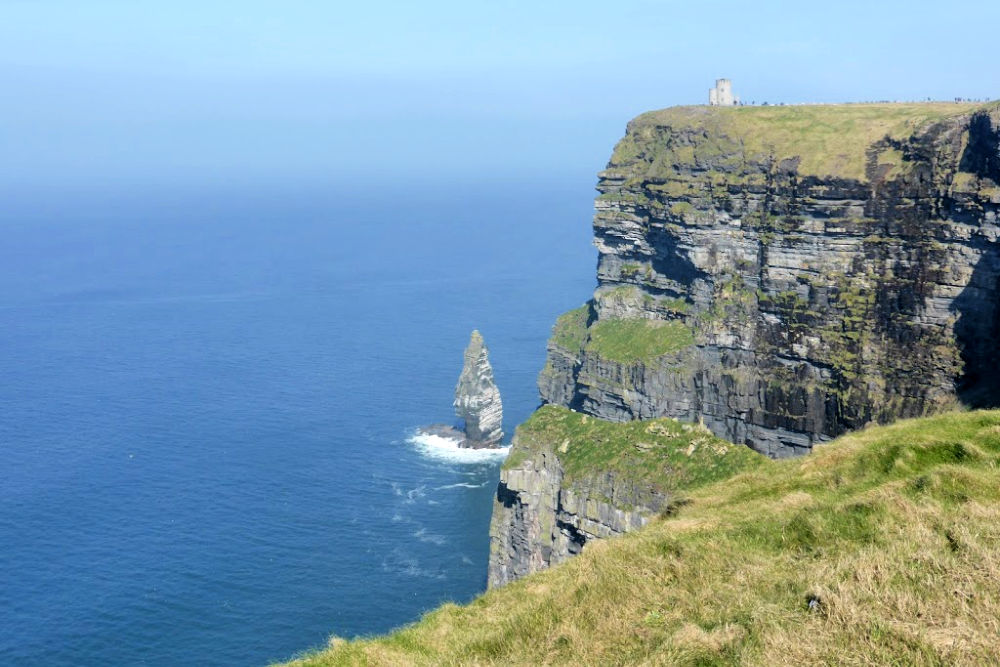
This post may contain affiliate links. Please read our full disclosure policy here.
To get the most out of Ireland, we recommend you rent a car. You could try to piece this itinerary together with public transportation but out of the main towns, it is slow and limiting. By having a car you can wander through the countryside, visit small villages, climb castle walls, explore abbey ruins you stumble upon or find yourself on a pretty rocky beach.
So let’s hop in the car and take a 7-day road trip around Ireland!
IRELAND ROAD TRIP OVERVIEW
- Travel to Dublin
- DAY 1: Wicklow Mountains | Glendalough Monastic Site | Upper Lake | Avoca Handweavers | Huntington Castle
- DAY 2: SS Dunbrody Famine Ship | Hook Lighthouse | Waterford Crystal | Kilkenny Castle
- DAY 3: Rock of Cashel | Blarney Castle | Ross Castle | Torc Waterfall | Drive through Killarney National Park
- DAY 4: Ring of Kerry | Stone Forts | Chocolate Factory | Slea Head Drive | Dingle
- DAY 5: Gallarus Oratory | Ballyseede Woods (via Connor Pass) | Flying Boat Museum | Askeaton Friary | Adare
- DAY 6: Cliffs of Moher | Aillwee Cave | The Burren (Ancient Monuments) | Galway
- DAY 7: Clocmacnoise | Trim Castle | Brú na Bóinne
- Travel Home from Dublin
Click the link on the “DAY” to quickly jump to that section of this itinerary.
IRELAND ROAD TRIP MAP
Please feel free to download this map for your personal use when planning your trip.
To download this Google Map, click on the grey star at the top of the map and this map will be added to your Google Maps account. You can then view it on your phone or computer in Google Maps by clicking on the menu button, going to “Your Places” and selecting this map.
We use these maps in the planning stage of creating all our itineraries as you can set out your plan in advance and then quickly reference these maps through the planning process.
IRELAND HERITAGE CARD
The Ireland Heritage Card provides admission to all fee-paying state-managed OPW (Office of Public Works) heritage sites throughout Ireland. These sites include national monuments, historic houses, castles, parks, and gardens.
The card is valid for one year, but it can still be a good investment even if you are only visiting Ireland for seven days, like we did, as long as you are planning to see multiple sites that are covered by the card.
The sites on this itinerary that are included on the Ireland Heritage Card are:
- Gallarus Oratory
- Killarney National Park
- Ross Castle
- Kilkenny Castle
- Battle of the Boyne Visitor Centre
- Brú na Bóinne Visitor Centre
- Trim Castle
- Clonmacnoise
- Rock of Cashel
- Glendalough Visitor Centre
- Wicklow Mountains National Park
Not all of these sites have entrance fees, but based on 2020 Heritage Card prices the card would cost an adult €40 but paying individual entrance fees for the sites would be €62.
For complete information about the card including the current price, list of all the sites included, and how to purchase the Ireland Heritage card, click here.
NEW: If you have an English Heritage Card you can now use it in Ireland! Check out all the details here. This would be great if you are visiting from England, or are visiting both England and Ireland as part of a trip to the British Isles.
DUBLIN TO CLONEGAL
Wicklow Mountains | Glendalough Monastic Site | Upper Lake | Avoca Handweavers | Huntington Castle
Located south of Dublin, you’ll be in the Wicklow Mountains within the hour to kick off your road trip. The drive is scenic as it winds its way through the mountains and you’ll likely find yourself pulling to the side of the road for some photo stops or driving around the very ambitious cyclists that you’ll come across pushing their way to the top!
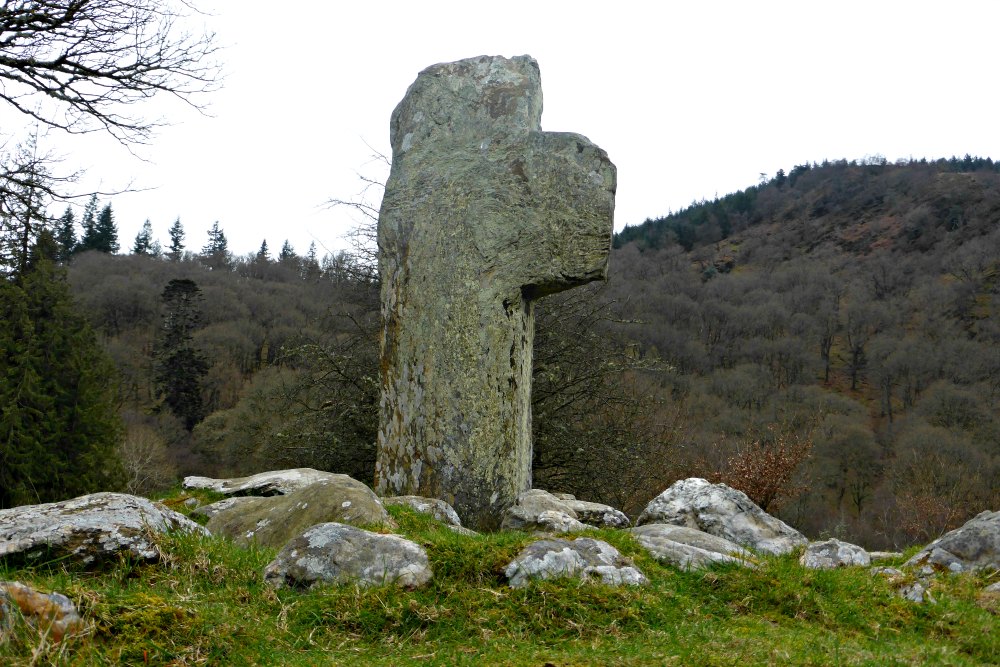
Nestled in the “glen of the two lakes” you’ll find the Glendalough Monastic Site that was founded in the 6th century by St. Kevin who was looking for seclusion. Today visitors can take a guided tour, or make their own way around the remains, to see the well-preserved Round Tower, among other remnants of the site.
Nearby you can visit the Upper Lake that has several hiking/walking routes, or you can visit other historic remains such as a beehive cell or an early fort. If like us, you aren’t able to find parking at Glendalough, it is still worth a stop at the Upper Lake for a peaceful stroll along the lake and grounds.
Set in a wooded setting at the meeting of two rivers, you’ll find a pretty hamlet of white cottages that make up the Avoca Handweavers. Here you will find the oldest surviving handweaving mill in Ireland that dates back to 1723 as you stroll through the buildings, or you may catch one of their weaving demonstrations to see the beautiful tweeds being made.
TIP: If you are purchasing the Ireland Heritage Card for your trip, you can pick it up at the Glendalough Monastic Site to get the full benefits of it for the trip.
WHERE TO STAY IN CLONEGAL
RECOMMENDED: Huntington Castle in Clonegal, County Carlow
It’s not every day you get to stay in an Irish castle, so when I found Huntington Castle I added it to the top of our accommodation possibilities.
It’s set in a peaceful riverside setting with acres of beautiful gardens to explore that include the ruins of a little 14th-century abbey and an interior that is very much castle-like with dark, creaking corridors and intriguing nooks and crannies. Our room was absolutely lovely, as were our hosts that provided a delicious full Irish breakfast. And if you arrive in the early spring, you may be lucky like we were to see their new additions to their flock of sheep!
Read our complete review of Huntington Castle.
CLONEGAL TO KILKENNY
SS Dunbrody Famine Ship | Hook Lighthouse | Waterford Crystal | Kilkenny Castle
The second day of your trip will find you in the southeast of Ireland where the three main tourist centres of this region – Waterford, Wexford, and Kilkenny – are close enough that you could use any as a base for exploring the attractions on today’s agenda.
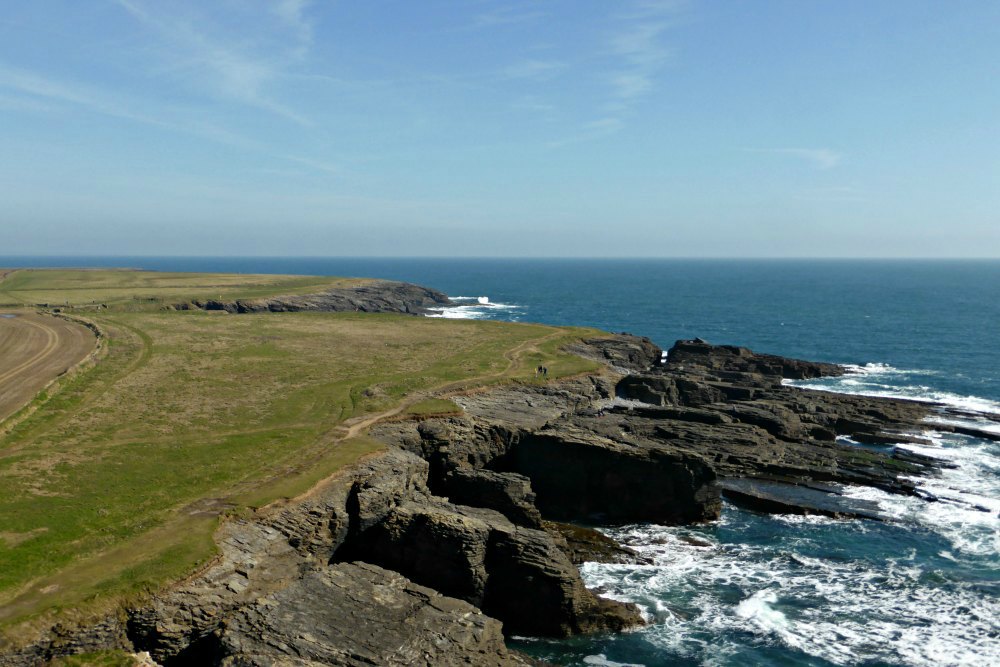
The SS Dunbrody Famine Ship Experience includes a life-sized reconstruction of the 19th-century tall ship that allowed people to emigrate from Ireland to escape the Great Famine. After visiting the interactive history centre, you can board the ship where you will find “passengers” on the ship who will describe what life on board was like for them.
Nestled at the end of the Hook Head Peninsula, you’ll find the picturesque lighthouse by the same name. The oldest part of the lighthouse dates from the 13th-century which makes it the world’s oldest lighthouse still in operation. Knowledgeable guides do a wonderful job of telling the history of Hook Lighthouse as you climb to the top for amazing views of the rocky Atlantic shore.
Waterford Crystal has been creating exquisite pieces of crystal since 1783 and now you can watch these pieces being created. Take the factory tour to watch the crystal being moulded, blown, cut, and finished – or just drop by their shop for some sparkling souvenirs of your trip to Ireland.
Standing majestically beside the River Nore since the 13th-century, Kilkenny Castle now has the feel of an 18th-century palace due to the many modifications made to it since medieval times. You can join one of the tours that include stops in the library, drawing room, and bedrooms. After touring the interior, you can stroll through the gardens or visit the café for afternoon tea.
WHERE TO STAY IN KILKENNY
RECOMMENDED: Rural Bliss in the Studio (Airbnb) in Kilkenny
This cosy studio apartment was truly bliss as the name suggests. It is a very peaceful and private retreat on a farm with warm and friendly hosts. We tucked up inside for the evening and enjoyed the scrumptious homemade bread, butter, and other treats left for us to have with our dinner.
NEW TO AIRBNB? Click for a discount on your first booking when you sign up for a new account.
KILKENNY TO KENMARE
Rock of Cashel | Blarney Castle | Ross Castle | Torc Waterfall | Drive through Killarney National Park
The third day of the itinerary starts with one of Ireland’s most iconic and impressive medieval ruins – the Rock of Cashel – which sits atop a hill and dominates the views for miles around. It was once a royal seat for the kings of Munster from the 4th until the 12th centuries when it was then granted to the church.
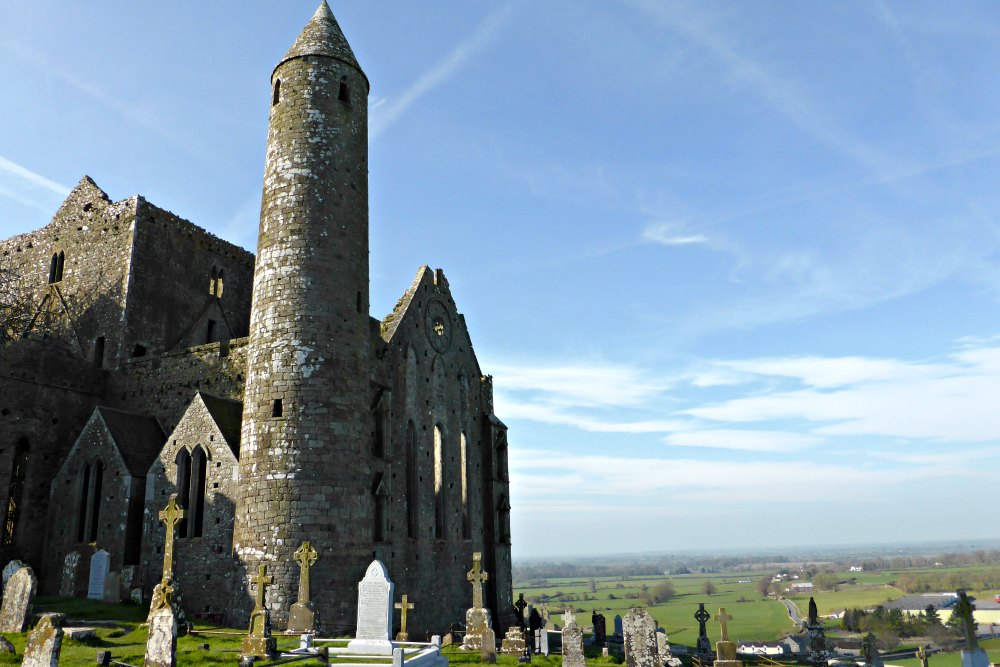
From there, head to Blarney Castle, which is likely Ireland’s most well-known castle with its famous “Blarney Stone” to kiss for the gift of the gab. Less known is that Blarney Castle is set amongst pretty gardens that are wonderful for a wander and steeped in legends.
Not as well-known, but still worth a visit, is the 15th-century fortress called Ross Castle. Visitors can tour the castle by guided tour only where guides make the castle come alive with their stories of the sights, sounds, and smells!
To finish off the day take a drive through Killarney National Park with a stop for a short hike at Torc Waterfall. There are several hiking trails, so for a short, easy hike, you can follow the trail through the forest as far as the waterfall. If you have more time and are more ambitious, you can opt to hike to the top of Torc Mountain for spectacular views of Killarney Lake.
WHERE TO STAY IN KENMARE
RECOMMENDED: Glenview Lodge (Airbnb) in Kenmare
A little ‘home away from home’ in the beautiful, lush green region of Kenmare. This Airbnb is a quiet lodge with a full kitchen, sitting room, ensuite private gardens and it sleeps three. We enjoyed sitting by the fireplace in the evening to play a few hands of cards.
NEW TO AIRBNB? Click for a discount on your first booking when you sign up for a new account.
KENMARE TO DINGLE
Ring of Kerry | Ancient Stone Forts | Skellig Chocolate Factory | Slea Head Drive | Dingle
The Ring of Kerry is, by far, the most well-travelled of Ireland’s scenic routes and for good reason with its beautiful countryside and historical sites.
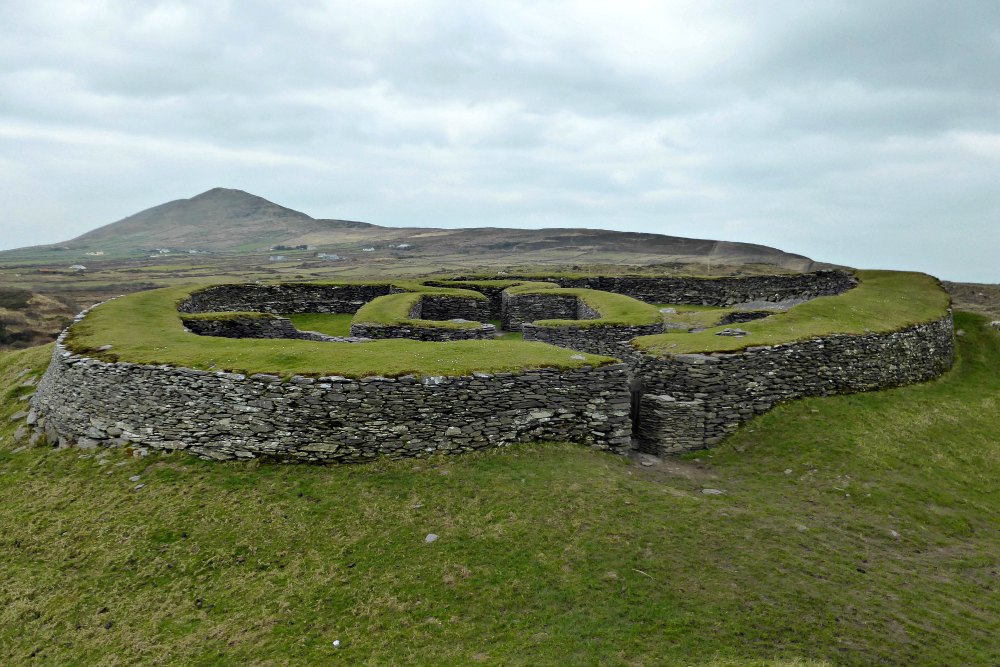
You will want to leave yourself a few hours for the Ring of Kerry so you can make some stops along the way for photos and to visit some of the ancient stone forts of Ireland. Three of the stone forts we recommend stopping for are:
Staigue Stone Fort: One of the largest and finest in Ireland, this stone fort is thought to have been built in the early centuries AD before Christianity came to Ireland.
Leacanabuile and Cahergal Stone Forts: These two forts are built quite near each other so you can visit both at the same stop. These are thought to be about 1000 years old and made to protect the farmsteads of wealthy landowners.
Chocolate lovers will want to make a little time for a stop at Skelligs Chocolate to see what goes into making their delicious treats. They may have a truffle tasting while you are there, but if not, it’s definitely worth trying their hot chocolate and picking up a few chocolates for the road.
From there, make your way to Dingle where you can spend the night but before you stop for the day, take a drive along the Slea Head drive for stunning views of the ocean along the rocky shoreline.
WHERE TO STAY IN DINGLE
RECOMMENDED: Murphy’s B&B in Dingle
Right in the heart of Dingle, this is a simple B&B with spacious rooms and en suite bathrooms. We liked that it was right next door to a pub that featured live traditional Irish music (and great food!) and was right in town for us to go out for a walk in the evening to explore. They also provided a delicious and hearty breakfast in the morning.
PLEASE NOTE: There are actually two Murphy’s B&Bs in Dingle and they are right next door to each other. We stayed in the B&B in the green building.
DINGLE TO LIMERICK
Gallarus Oratory | Ballyseede Woods | Foynes Flying Boat Museum | Askeaton Friary | Adare
A variety of sights and attractions are on the agenda for day 5 of this Ireland road trip, starting with the Gallarus Oratory that is just of out Dingle. This small bee-hived shaped structure is thought to be an early Christian church build between the 7th and 9th centuries.
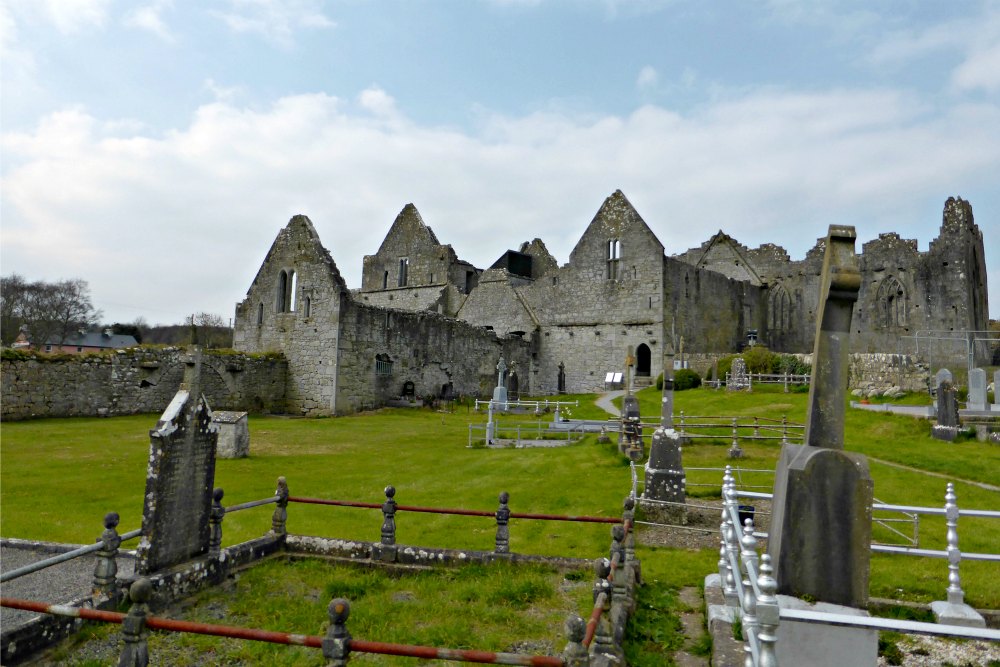
For a little break from driving, plan a stop at Ballyseede Woods for a woodland walk. Along the way keep an eye out for the 22 varieties of native trees (marked with their Gaelic and English names) and the carved wood pieces, some of which are made into benches just perfect for sitting on to listen to the leaves rustling and the birds singing.
Located in the terminal of the original Shannon Airport, the Foynes Flying Boat and Maritime Museum has a fascinating collection of film footage, instruments, and a full-sized replica of Pan Am’s first flying boat, the “Yankee Clipper”. This is a must-do for aviation buffs, but it’s such an interesting museum most people would enjoy it.
We didn’t have the Askeaton Friary on our plan for Ireland but rather stumbled upon it and I’m so glad we did! It was founded in 1389 and today is one of the most beautiful complete ruins in the country. One of the most striking features is the 15th-century cloister around a central arcade. Definitely keep your camera ready for this stop!
To finish off the day, plan a short stop in Adare to see some of the prettiest little thatched-roof cottages, pop into the Holy Trinity Abbey Church to see the beautiful stained-glass windows, and then find a little café for a coffee before heading to your accommodations for the night.
WHERE TO STAY IN LIMERICK
We don’t have any personal recommendations for a place to stay in Limerick as we weren’t very keen on the Airbnb we stayed in and wouldn’t recommend it.
If you like Airbnb, you can check out these suggestions for Limerick. Or here are some ideas for a hotel in Limerick if you’d prefer that instead.
NEW TO AIRBNB? Click for a discount on your first booking when you sign up for a new account.
LIMERICK TO GALWAY
Cliffs of Moher | Aillwee Cave | The Burren | Galway
Natural wonders are in store for day 6 of your Ireland road trip with the first stop at the very well-known Cliffs of Moher.
While very busy with visitors, you don’t have to get very far from the visitor centre to have some space to yourself to admire the spectacular cliffs. These magnificent sea cliffs reach their full height of 214 m (702 ft) just north of O’Brien’s Tower and offer views of the open sea, the Aran Islands, and the Twelve Bens Mountains of Connemara. A walk along the cliff edge (not too close to the edge!) listening to the crashing waves and the soaring seabirds makes for a wonderful start to the day.

Next on the agenda is to head underground into the deep caves of Aillwee Cave. About 50 years ago a local farmer followed a dog inside and found a huge cavern with 1,000 m (3280 ft) of passages running through the heart of the mountain. Today, the guided tour, generally given by local geology students, is about 30 minutes and takes you through these caves that were left undiscovered for thousands of years.
Driving through Ireland is full of memorable landscapes, but none of them quite as unique as the Burren. From the Irish word “Boireann” that means “great rock”, the Burren is indeed some great rocks! The land is full of cracks and crevices with plants growing between them and is rich in archaeological remains such as dolmens, wedge tombs, and ring forts. It is a definite must-see on when you are in Ireland.
To finish the day, make your way to Galway where you can visit some of the city’s attractions, or just relax at one of their colourful pubs with a pint while you watch some live music for the evening.
WHERE TO STAY IN GALWAY
Unfortunately, the really nice one-bedroom townhouse we stayed at in Galway isn’t available on Airbnb anymore so we don’t have any personal recommendations for Galway.
If you like Airbnb, you can check out these suggestions for Galway. Or here are some ideas for a hotel in Galway if you’d prefer that instead.
NEW TO AIRBNB? Click for a discount on your first booking when you sign up for a new account.
GALWAY TO DUBLIN
Clonmacnoise | Trim Castle | Brú na Bóinne
For the final day of this Ireland road trip you will get to see some of Ireland’s most impressive ancient sites, and, of course, a castle!
The day starts at the extensive and impressive monastic remains of Clonmacnoise that overlooks the River Shannon. Founded in AD 548 by St. Ciaran it grew to become an unrivalled centre of Irish religion, literature, and art which drew monks from all over Europe to come here to study and pray in the 7th to 12th centuries.
Today visitors can explore the site that is enclosed in a walled field and includes several early churches, High Crosses, Round Towers, and graves that are in remarkably good condition. We recommend you start in the visitor centre and watch the 20-minute video to learn about the site’s history, design, and function before going outside to the grounds.
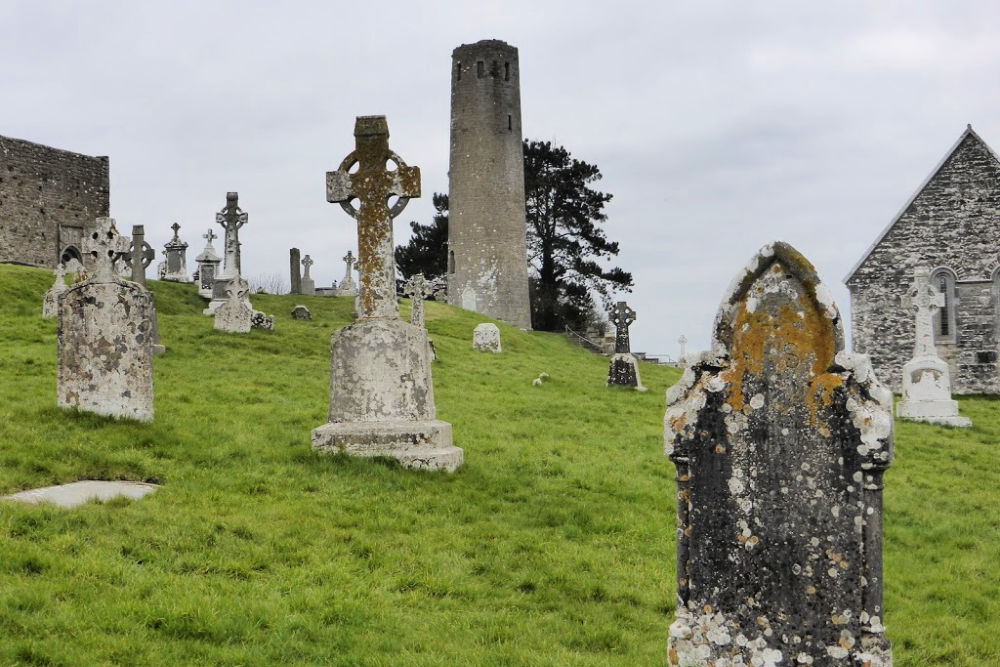
Next up is a visit to one of the most imposing Anglo-Norman fortresses in Ireland – Trim Castle. The castle stands in the centre of town by the Boyne River with its ruins covering about 2.5 acres for exploring.
The interior of the castle can only be visited by guided tour, but the guide does a great job of telling the stories of the castle and giving information and history about many different rooms. At the end of the tour, you’ll be taken to the roof for great views of the rectangular towers and sections of the curtain wall with the battle gates, as well as the city of Trim and the river.
The final site to visit on this trip to Ireland is the UNESCO World Heritage site of Brú na Bóinne. The area is made up of many different sites with the three principal sites being Newgrange, Knowth, and Dowth.
For our visit, we opted for the guided tour of the Newgrange passage tomb that is more than 5,000 years old (older than the Egyptian pyramids and Stonehenge!). To say that this massive mound and passage tomb are amazing feats of engineering is an understatement and definitely raises the question “What is it all for?”. Your guide will take you inside, answer your questions, and explain the prehistoric megalithic art found at this amazing site.
WHERE TO STAY IN DUBLIN
RECOMMENDED: Seamount House B&B in Dublin
If you’re flying home from Dublin, especially early in the morning, this is a great choice as it was mere minutes from the airport. It was a really lovely B&B to stay, owned by some very nice folks, and another delicious breakfast to get us on the way in the morning.
BEST TIME TO TAKE AN IRELAND ROAD TRIP
In our opinion, the best time to visit Ireland is either the spring (March to May) or the autumn (mid-September to October). The weather is good (although it can vary so pack layers!) especially as it gets closer to May or it can still be warm in September. The summer crowds aren’t in full swing and accommodation rates aren’t as high as the peak season.
We visited in March and found almost everything we wanted to visit was open and only the very biggest sights were crowded. In some cases, we had “private” tours as we happened to be the only people visiting a particular attraction at the time which was fantastic!
But you may not be able to visit during those times of the year so what should you expect in the summer or winter?
In the summer (June to mid-September) the days are long (like 10:00 pm sunsets), the weather is warm, and every sightseeing attraction, B&B, and hotel is open. However, with this, you’ll also find the biggest crowds, especially in the most popular areas of Dublin, Kerry, and along the southern and western coasts. This is also the time of year where airfare, car rental, and hotel prices will be the highest.
In the winter (November – February) there are fewer daylight hours and in some cases, you’ll find reduced opening hours for attractions, with some of the smaller attractions being closed altogether. The weather is cold, wet, and can be foggy which can really put a damper on a day of sightseeing – especially when so much of the best of Ireland is outside. But, you are likely to find great prices on airfares, hotels, and B&Bs (though some B&Bs may not be open at all).
Want to save this for later? Click the Pinterest button on the left for a pinnable image!
RESOURCES | PLAN YOUR IRELAND ROAD TRIP
To book flights, rental cars, accommodations, and activities for your trip, please check out our recommended travel providers, favourite apps and websites.
These are a few tours we would recommend for your Ireland road trip.
Some of the links in the post above are affiliate links. This means if you click on the link and purchase the item, we will receive an affiliate commission but this does not affect the price to you. Please read our full disclosure policy here.
